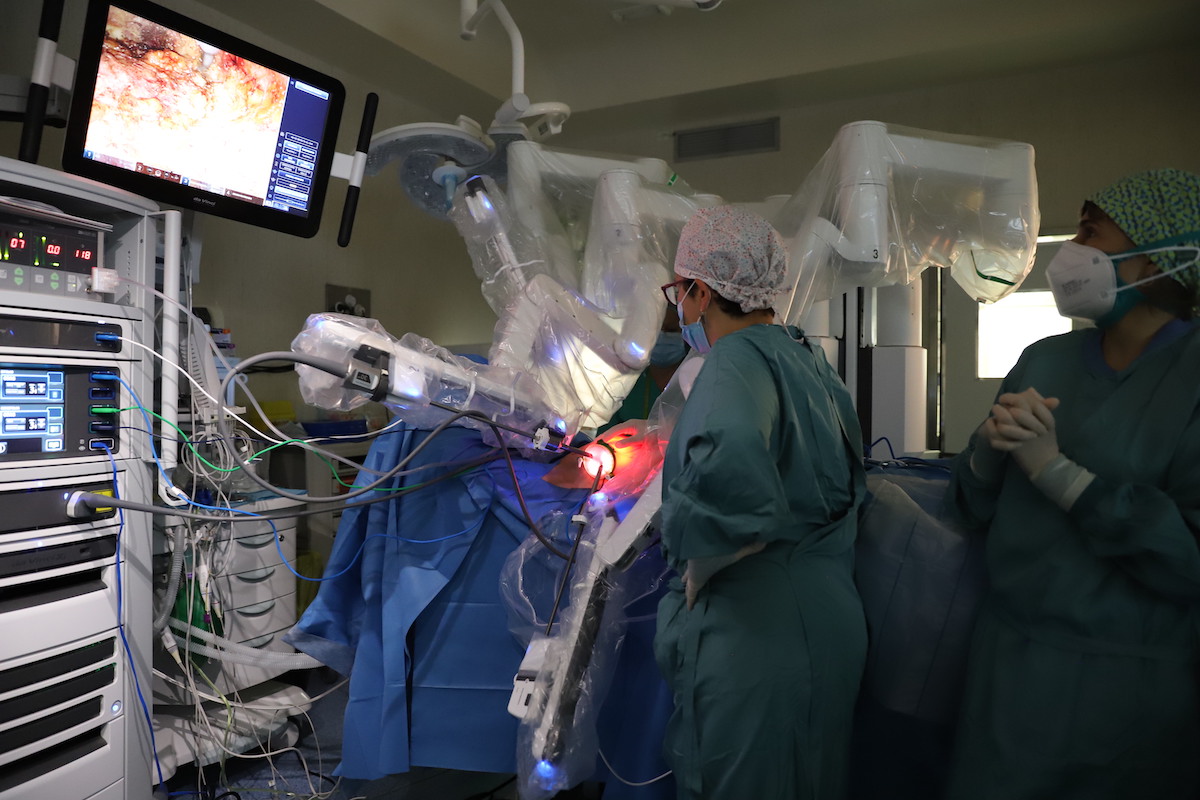The Germans Trias i Pujol Hospital, located in the municipality of Badalona, became the first hospital in Spain to perform a robotic mastectomy. This robot-assisted procedure produces less skin damage and offers great oncological safety.
The U.S. company Intuitive Surgical developed the Da Vinci surgical platform for this type of intervention, and chose Hospital Germans Trias to apply the technique in the country.
In fact, the first robotic mastectomies with breast reconstruction have already been successfully performed and patients are already recovering at home.
Two of the patients who underwent surgery had lesions or tumors in both breasts or in one breast affected by breast cancer and they were removed.
They described the decision as very wise and safe. In addition, artificial prostheses were implanted because of the impossibility of resorting to prostheses with flesh grafts.
The advantages of a robotic mastectomy
As the artificial implants are made of foreign materials, when inserted they can cause postoperative complications for the patient.
In this type of traditional surgery, the surgery is advanced through a large incision in order to remove the mammary gland with hands and forceps, leaving the skin very damaged.
The first advance in achieving a better adaptation to artificial prostheses was achieved through endoscopic mastectomies. In this process, two small holes are opened in the skin through which a camera and the surgical material necessary for the removal are inserted.
But, now, through the use of the robotic platform it is possible to perfect the intervention.
All thanks to the fact that the robot is in charge of performing the force to remove the mammary gland, with the advantage that it does not increase or decrease the intensity at any time (as happens in laparoscopy when the surgeon uses more or less force).
In addition, the robot does not need to lean on the patient to extirpate the gland. Therefore, it makes this procedure more accurate.
Based on these differences, with robotic mastectomy it is possible to perform smaller wounds, cause less skin lesions and, in turn, improve the patient’s esthetics. In fact, the scar is a minimal incision in the armpit.
Other benefits
- It produces less loss of sensitivity in the chest.
- The areola and nipple can be maintained with greater sensitivity due to less manipulation and damage to the nerves of the breast.
- As a minimally invasive technique, it can reduce free cancer cells in the blood.
- Robotic mastectomy is very suitable for patients requiring artificial prostheses.

